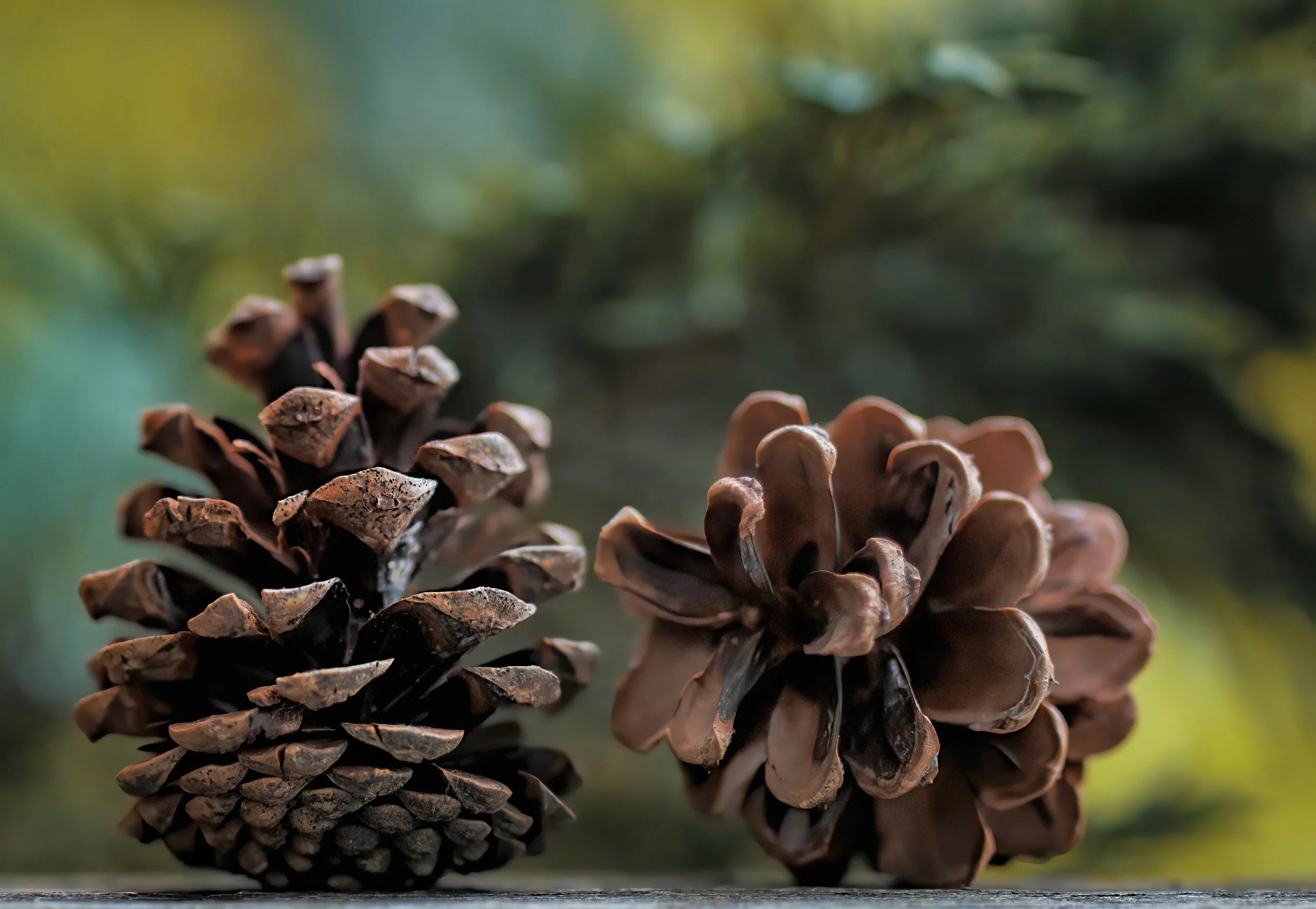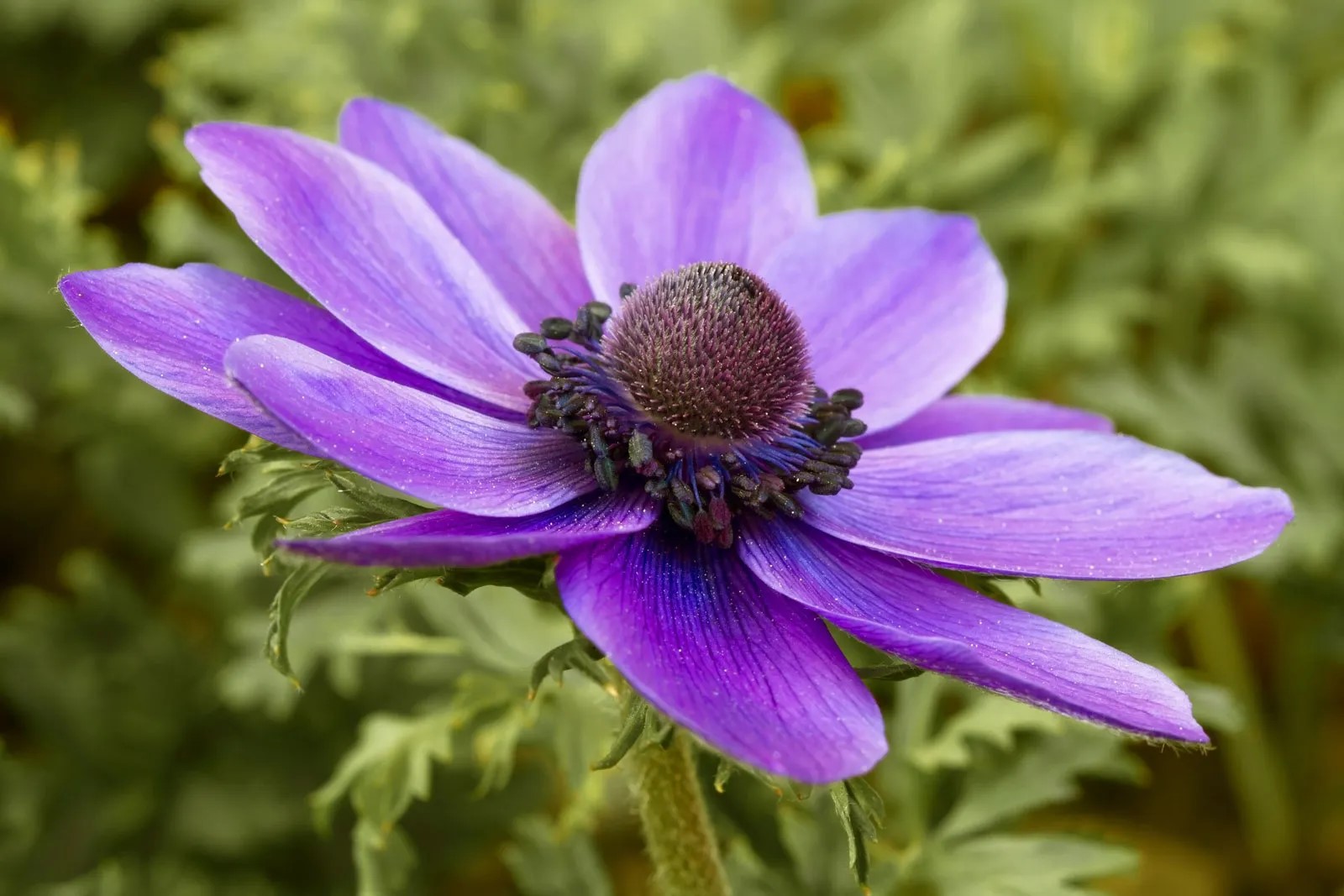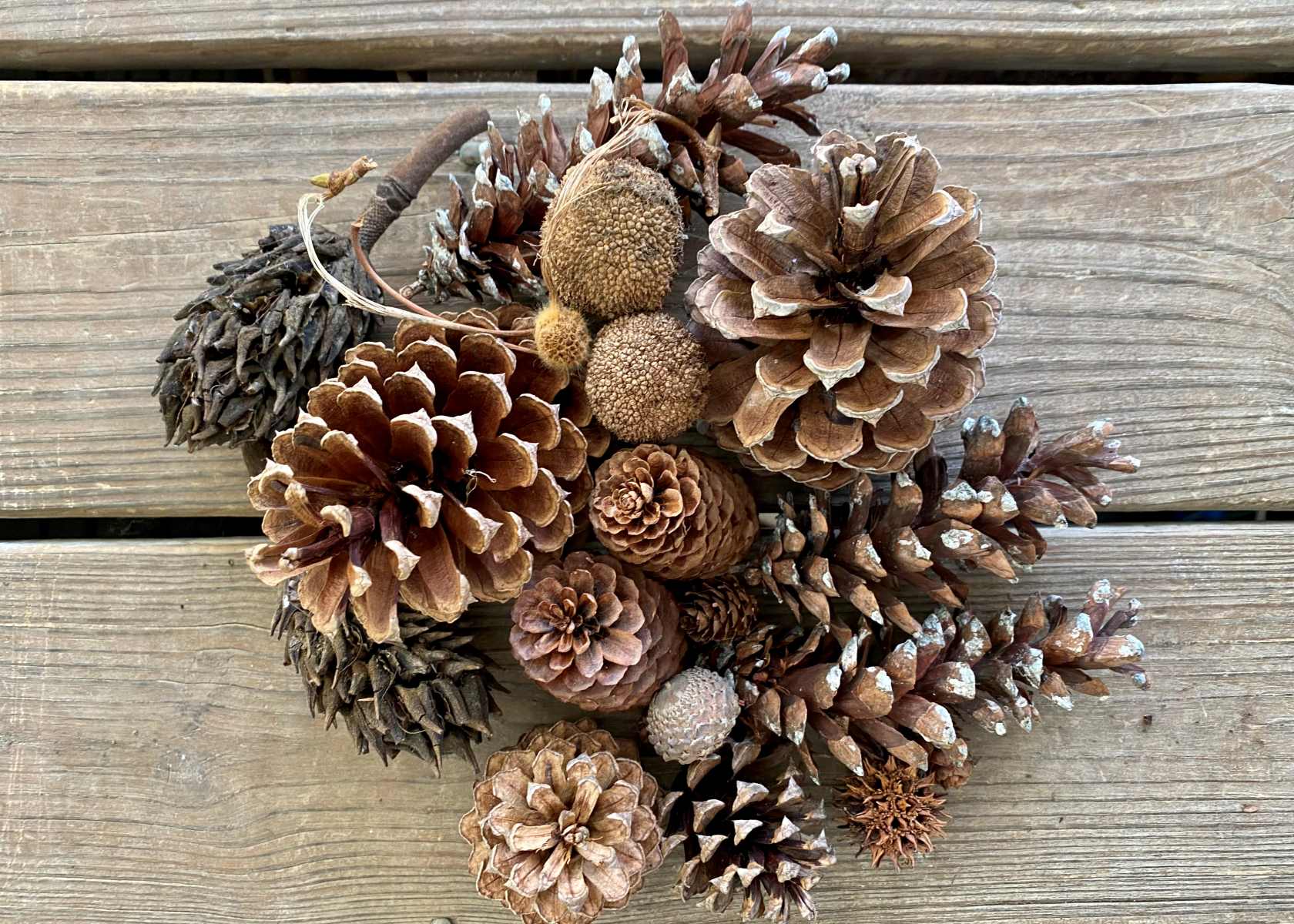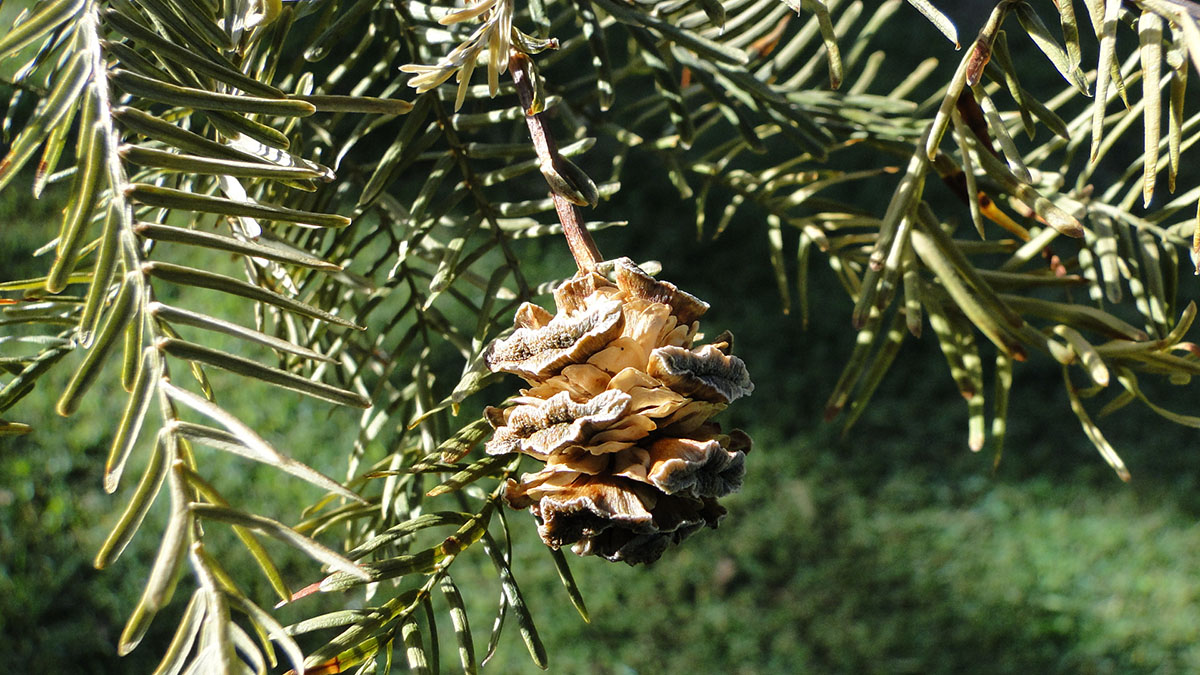Home>Garden Essentials>What Gymnosperms Are Named For Their Seed Cones?


Garden Essentials
What Gymnosperms Are Named For Their Seed Cones?
Modified: March 15, 2024
Discover the unique gymnosperms named for their seed cones in this insightful gardening guide, perfect for any garden enthusiast.
(Many of the links in this article redirect to a specific reviewed product. Your purchase of these products through affiliate links helps to generate commission for Storables.com, at no extra cost. Learn more)
Introduction
In the plant kingdom, there is a fascinating group of plants known as gymnosperms. These plants are unique in many ways, one of which is their method of reproduction through the use of seed cones. Gymnosperms, which means “naked seed” in Greek, are named for their distinctive cones that protect and distribute their seeds.
Gymnosperms are a diverse group of plants that have been around for millions of years. They can be found in various habitats around the world, from lush rainforests to dry desert regions. In this article, we will explore the gymnosperms that are specifically named for their seed cones, including cycads, ginkgoes, conifers, and gnetophytes. We will also delve into the unique characteristics of these plants and their ecological importance.
So, if you’re ready to embark on a botanical journey and learn about the gymnosperms named for their seed cones, let’s dive in!
Key Takeaways:
- Gymnosperms, like cycads and conifers, are named for their seed cones, which protect and disperse their seeds. They play a vital role in ecosystems, supporting biodiversity and carbon sequestration.
- Cycads, ginkgoes, conifers, and gnetophytes are fascinating gymnosperms named for their seed cones. They have unique characteristics and ecological importance, contributing to the health and balance of natural habitats.
Read more: What Do Gymnosperms Use To Disperse Seeds
Gymnosperms: An Overview
Gymnosperms are a group of plants that have been around for millions of years and play a vital role in our ecosystems. Unlike angiosperms, which have flowers and enclosed seeds, gymnosperms have naked seeds that are typically borne on cones. This unique characteristic sets them apart and gives them their name, gymnosperms meaning “naked seed” in Greek.
Gymnosperms have a long evolutionary history and are considered one of the oldest groups of plants on Earth. They first appeared in the fossil record around 360 million years ago and have since diversified into a variety of forms and species. Today, there are four main groups of gymnosperms: cycads, ginkgoes, conifers, and gnetophytes, each with its own distinct characteristics and adaptations.
One of the defining features of gymnosperms is their ability to thrive in a wide range of environments. They can be found in nearly every corner of the globe, from the freezing Arctic tundra to the scorching deserts. This adaptability is due in part to their ability to withstand harsh conditions and reproduce efficiently through their unique seed cones.
Gymnosperms also play a significant role in the ecology of many ecosystems. They are often the dominant vegetation in forests, providing crucial habitats for a wide range of organisms. The cones of gymnosperms serve as a source of food for many animals, including birds, squirrels, and small mammals. Additionally, gymnosperms are known for their ability to capture carbon dioxide from the atmosphere, contributing to the global carbon cycle and mitigating climate change.
Overall, gymnosperms are a fascinating group of plants that have stood the test of time. Their unique reproductive strategy and adaptability have allowed them to thrive in diverse environments and have important ecological roles. Now that we have a general understanding of gymnosperms, let’s explore the specific types that are named for their seed cones.
Gymnosperms and Seed Cones
Seed cones are a defining characteristic of gymnosperms. These cones serve multiple purposes, including protecting the seeds and aiding in their dispersal. Unlike the flowers of angiosperms, seed cones are typically not colorful or fragrant. Instead, they are often woody or scaly structures that develop on the branches of gymnosperm trees or shrubs.
The main function of seed cones is to house and protect the reproductive structures of gymnosperms. Within the cones, you will find both male and female reproductive parts. The male cones, known as pollen cones, produce pollen grains that contain the sperm cells. These pollen grains are then carried by wind or insects to the female cones.
Female cones, also called seed cones or ovulate cones, are larger and more noticeable than the male cones. Within these cones, ovules (which eventually become seeds) are produced. The female cones often remain on gymnosperm trees for an extended period, even after the seeds have matured.
Unlike angiosperms, which rely on pollinators to transfer pollen from the male to the female reproductive parts, gymnosperms primarily depend on wind pollination. The pollen grains are released from the male cones and carried by the wind to land on the receptive surfaces of the female cones. The pollination process in gymnosperms is often less precise and efficient than in angiosperms, but it allows them to reproduce in diverse environments where pollinators might be scarce.
As the female cones mature, they undergo a series of changes to aid in seed dispersal. In some gymnosperm species, the cone scales open gradually to release the seeds. Other species have cones that disintegrate or break apart, dispersing the seeds across the surrounding area. This dispersal mechanism ensures that the seeds have a chance to find favorable conditions for germination and growth.
The seed cones of gymnosperms are not only functional but also provide aesthetic value. They often add a unique beauty to the landscape, with their various shapes, sizes, and textures. Coniferous trees, such as pine and spruce, are particularly well-known for their striking seed cones, which can be found in a range of colors and forms.
Now that we have a better understanding of gymnosperms and their seed cones, let’s explore the different types of gymnosperms that are named for their distinctive cones.
Types of Gymnosperms Named for Their Seed Cones
Gymnosperms are a diverse group of plants that have evolved unique adaptations to survive in various environments. Among these gymnosperms, there are several types that are specifically named for their seed cones. Let’s explore each of these types in more detail:
Cycads
Cycads are an ancient group of gymnosperms known for their palm-like appearance and striking seed cones. These cone-bearing plants have been around for over 200 million years, dating back to the Mesozoic era. Cycads typically have large, compound leaves and stout trunks, giving them a tropical and prehistoric look.
The seed cones of cycads are often large and cone-shaped, resembling the shape of pine cones. They are usually found at the center of the crown of leaves. Male and female cycad cones are separate, with male cones being smaller and more elongated, while female cones are larger and more rounded. The female cones produce bright, fleshy seeds that are often a source of food for wildlife.
Read more: Where Are Gymnosperms’ Seeds Produced?
Ginkgoes
Ginkgoes, or Ginkgo biloba, are unique gymnosperms that are known for their fan-shaped leaves and distinctive seed cones. Ginkgoes are considered living fossils, as they are the last surviving species of their genus and have remained relatively unchanged for millions of years.
The seed cones of ginkgoes are small and inconspicuous compared to other gymnosperms. They are yellowish or greenish in color and produce a strong odor when they mature. Female ginkgo cones contain seeds that are surrounded by fleshy tissue, which can emit a strong smell that some people find unpleasant. Despite the odor, ginkgoes are beloved for their decorative foliage and are often cultivated as ornamental trees.
Conifers
Conifers are the most familiar and diverse group of gymnosperms, consisting of trees and shrubs that bear cones. This group includes familiar species such as pines, spruces, firs, and cedars. Conifers are known for their evergreen needles and their iconic seed cones, which are often associated with wintertime and holiday decorations.
Conifer seed cones come in a range of shapes and sizes, depending on the species. They can be cylindrical, ovoid, or even spherical. The cones of conifers are typically made up of overlapping scales, each of which protects the seeds. Male and female cones are usually found on the same tree but in different locations. The male cones are smaller and produce pollen, while the female cones are larger and contain ovules that develop into seeds.
Gnetophytes
Gnetophytes are a small group of gymnosperms that are often considered evolutionary outliers. This group includes plants such as Ephedra, Gnetum, and Welwitschia. Gnetophytes have unique characteristics that set them apart from other gymnosperms, including their seed cones.
Gnetophyte seed cones vary in appearance depending on the species. For example, the Ephedra genus produces small, scaly cones that contain seeds. On the other hand, Welwitschia has cone-like reproductive structures that are less cone-shaped but still play a similar role in the reproduction of these fascinating plants.
Each of these groups of gymnosperms named for their seed cones has its own distinct characteristics and adaptations. From the tropical appearance of cycads to the evergreen beauty of conifers and the unique features of ginkgoes and gnetophytes, these gymnosperms showcase the incredible diversity of plant life on our planet.
Now that we’ve explored the different types of gymnosperms named for their seed cones, let’s delve into the unique characteristics and ecological importance of these fascinating plants.
Unique Characteristics of Gymnosperms Named for Their Seed Cones
Gymnosperms named for their seed cones possess a range of unique characteristics that set them apart from other plants. These characteristics contribute to their ability to thrive in diverse environments and play important ecological roles. Let’s explore some of these unique features:
Cycads
Cycads are known for their impressive longevity, often living for several hundred years. One notable characteristic of cycads is their ability to form symbiotic relationships with specialized insects known as cycad pollinators. These insects help in pollinating the cycad cones, ensuring the successful reproduction of these ancient plants.
Cycads also have an interesting reproductive strategy. While some cycads are primarily wind-pollinated, others rely on beetles for pollination. These beetles are attracted to the cone’s scent and enter the female cones to lay their eggs. In the process, they inadvertently transfer pollen, aiding in the fertilization of the ovules.
Read more: Where Are Gymnosperms’ Seeds Produced?
Ginkgoes
One of the most remarkable characteristics of ginkgoes is their resistance to environmental stressors. Ginkgoes have proven to be highly adaptable and can withstand pollution, pests, and diseases. In fact, ginkgoes were one of the few plant species to survive the atomic bomb blast in Hiroshima, testament to their resilience.
Another unique trait of ginkgoes is their leaf morphology. Ginkgo leaves have a distinct fan shape with parallel veins, giving them a visually striking appearance. This unique leaf structure helps maximize sunlight absorption, aiding in the tree’s photosynthesis process.
Conifers
Conifers are well-known for their ability to retain their foliage year-round, thanks to their needle-like leaves. These needle-like leaves have a reduced surface area and are covered in a waxy coating, helping to minimize water loss in dry and cold environments. Additionally, the shape of their seed cones often facilitates efficient seed dispersal through wind or the foraging activities of animals.
Another fascinating characteristic of conifers is their ability to produce resin. Resin acts as a protective barrier against pests and diseases, as well as a sealant for wounds. It also gives conifer trees their distinctive scent and can be used medicinally and in various industrial applications.
Gnetophytes
Gnetophytes possess some unique characteristics that differentiate them from other gymnosperms. For example, one genus of gnetophytes called Welwitschia consists of only two species, with Welwitschia mirabilis being the best known. These plants have incredibly long lifespans, with some individuals living for over 1,000 years.
An intriguing characteristic of gnetophytes is their ability to survive in arid environments with limited water availability. They have evolved specialized mechanisms to conserve water, such as the ability to store water in their leaves and stems. This adaptation allows them to thrive in desert regions where other plants struggle to survive.
These unique characteristics of gymnosperms named for their seed cones contribute to their ecological success and resilience in diverse habitats. From the longevity of cycads to the adaptability of ginkgoes, the hardiness of conifers, and the arid tolerance of gnetophytes, these plants exemplify the remarkable adaptability and survival strategies of gymnosperms.
Now that we have explored the unique characteristics of gymnosperms named for their seed cones, let’s delve into the ecological importance of these fascinating plants.
Read more: How To Plant Pine Cone Seeds
Ecological Importance of Gymnosperms with Seed Cones
Gymnosperms named for their seed cones play a crucial role in ecosystems around the world. These plants provide numerous ecological benefits that contribute to the health and balance of natural habitats. Let’s explore the ecological importance of gymnosperms with seed cones:
Biodiversity Support
Gymnosperms with seed cones provide essential habitats for a wide range of organisms. The cones serve as a source of food and shelter for various animals, including birds, squirrels, insects, and small mammals. These animals often rely on the cones as a food source during the winter months when other food options may be scarce.
The cones of gymnosperms also offer nesting sites for birds and provide protective cover for smaller animals, allowing them to escape from predation. The presence of these plants in ecosystems enhances biodiversity and supports the interconnectedness of different species within the food web.
Nutrient Cycling and Soil Health
Gymnosperms with seed cones contribute to nutrient cycling and soil health in forests and other habitats. When the cones and their seeds fall to the ground, they decompose, releasing essential nutrients back into the soil. These nutrients are then taken up by other plants, supporting their growth and ensuring the overall health of the ecosystem.
Additionally, the fallen cones and needles of gymnosperms can act as a natural mulch layer, helping to conserve soil moisture and regulate soil temperature. This layer of organic material also aids in erosion control and prevents the loss of valuable topsoil, particularly in areas prone to heavy rainfall.
Carbon Sequestration
Gymnosperms, including those named for their seed cones, play a significant role in carbon sequestration. These plants have the ability to capture and store carbon dioxide from the atmosphere through photosynthesis. This process helps to mitigate the impacts of climate change by reducing the concentration of greenhouse gases in the air.
Coniferous trees, in particular, are known for their high carbon storage capacity. Their large biomass and long lifespans make them effective carbon sinks. Protecting and preserving gymnosperms with seed cones can therefore contribute to global efforts to combat climate change.
Read more: How To Harvest Pine Cone Seeds
Erosion Control and Watershed Protection
The well-developed root systems of gymnosperms, coupled with the litter layer created by fallen cones and needles, help to stabilize soil and prevent erosion. In areas with steep slopes or vulnerable to heavy rainfall, the presence of these plants can help mitigate the loss of soil and the subsequent runoff into rivers and streams.
Gymnosperms with seed cones also play a role in watershed protection. The roots of these plants help to filter and retain water, reducing the risk of soil erosion and the transport of sediments and pollutants into nearby water bodies. This contributes to the overall water quality and ecosystem health of aquatic habitats.
The ecological importance of gymnosperms named for their seed cones extends beyond their aesthetic value. These plants support biodiversity, nutrient cycling, carbon sequestration, and erosion control, all of which contribute to the overall health and sustainability of ecosystems.
By recognizing and valuing the role of gymnosperms with seed cones, we can work towards their conservation and ensure the continued functioning of our natural ecosystems.
Now that we have explored the ecological importance of gymnosperms with seed cones, let’s conclude our exploration of these remarkable plants.
ConclusionGymnosperms named for their seed cones are a fascinating group of plants that have captured the awe and curiosity of botanists and nature enthusiasts for centuries. These unique plants, including cycads, ginkgoes, conifers, and gnetophytes, have distinct characteristics and adaptations that have allowed them to thrive in a wide range of habitats.
From the palm-like appearance of cycads to the resilient and adaptable nature of ginkgoes, the evergreen beauty of conifers, and the arid tolerance of gnetophytes, each type of gymnosperm leaves a unique mark on the natural world.
These gymnosperms play a vital role in our ecosystems, supporting biodiversity by providing habitats and food sources for a wide range of organisms. Their cones act as centers of nutrient cycling, releasing valuable nutrients into the soil and contributing to soil health.
Moreover, gymnosperms with seed cones are champions of carbon sequestration, helping mitigate climate change by capturing and storing carbon dioxide in their biomass. Their role in erosion control, watershed protection, and water quality enhancement further underscores their ecological importance.
Preserving and protecting these remarkable plants is crucial for the health and balance of our natural environments. By recognizing their uniqueness and ecological significance, we can work towards their conservation and ensure their continued presence in our landscapes.
So, the next time you encounter a cycad with its impressive seed cones or stand beneath a towering conifer with its majestic cones, take a moment to appreciate the beauty, resilience, and invaluable role these gymnosperms play on our planet.
In the world of plants, gymnosperms named for their seed cones truly stand out, serving as a reminder of the incredible diversity and resilience found in nature.
Frequently Asked Questions about What Gymnosperms Are Named For Their Seed Cones?
Was this page helpful?
At Storables.com, we guarantee accurate and reliable information. Our content, validated by Expert Board Contributors, is crafted following stringent Editorial Policies. We're committed to providing you with well-researched, expert-backed insights for all your informational needs.












0 thoughts on “What Gymnosperms Are Named For Their Seed Cones?”